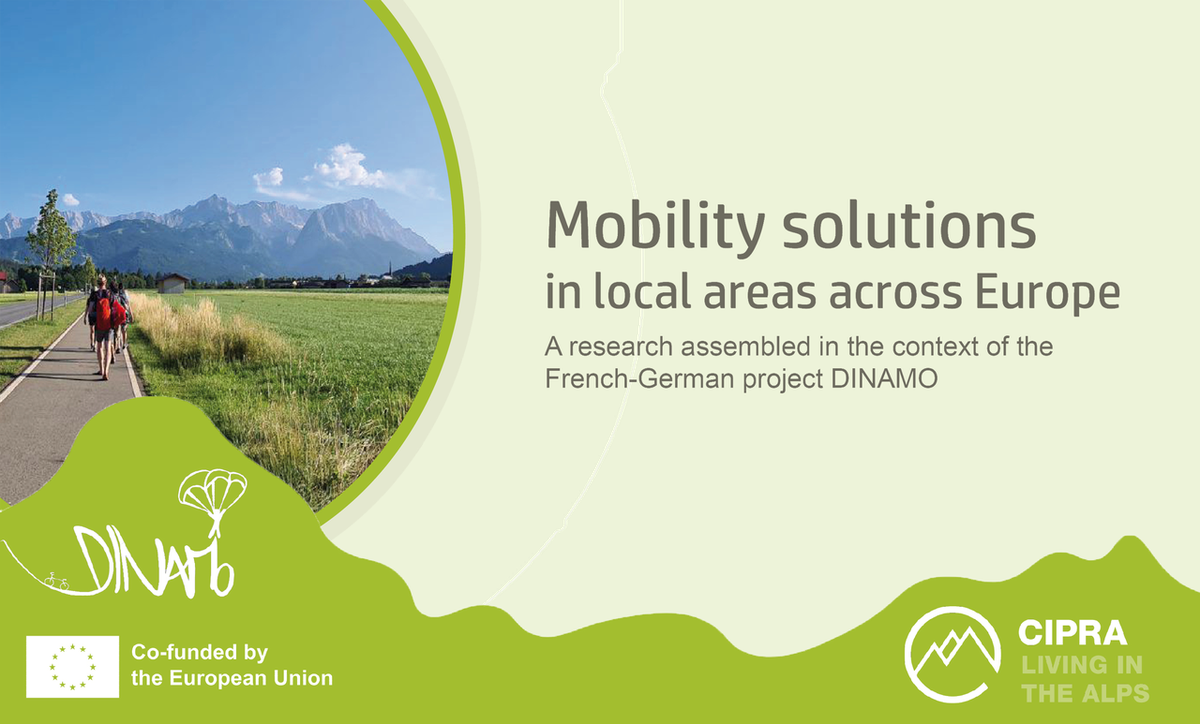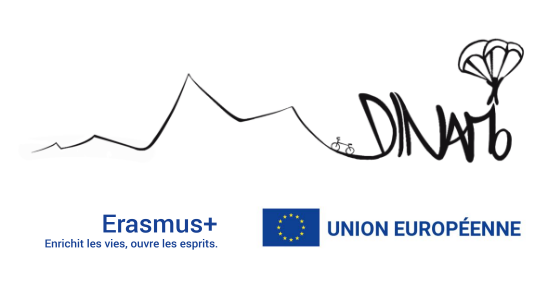DINAMO Erasmus+ project: a new white paper on mountain mobility
The "DINAMO" project aims to address the challenges of rural mountain mobility by encouraging cooperation between different stakeholders and stimulating creative processes through international exchanges. The main objective is to promote sustainable mobility solutions in rural mountain areas, to help them become less dependent on individual car transport.
Mobility in the rural Alpine space
The Alps are crossed by numerous major international transport axes, including road corridors. In recent decades, traffic in and through the Alps has increased extremely. In the process, rail traffic increased by a factor of 1.5, while road transport increased by a factor of more than 8. Every year, the alpine road network is used by millions of trucks, tourists and Alpine residents: an average of 40,000 vehicles per day travel over the Brenner Pass alone (as of 2019), and 38.8 million net tons of goods are transported by road over the pass each year (2018).
At the same time, intra- and transalpine traffic is expected to continue growing. The challenges here are the management of traffic flows - especially the separation of transit and local road trafic - and the emissions of CO2, pollutants and noise. Because of the topography of the valleys, the environmental impacts of traffic and the impacts on health and on the landscape are greater in mountain areas than elsewhere: pollutant accumulations can reach metropolitan proportions. Another important aspect of traffic in the Alps is the dissection and fragmentation of the natural habitat for wildlife.
But besides these big traffic axes and touristic attraction points, the more remote areas - as in the Alps - are mostly not well served by public transport or are not well connected. This is also due to the complex topography of the mountainous regions and their particular challenges such as road layout, difficult cross-connections from valleys over passes and severely restricted space for railway lines and other mobility infrastructure. As a result, the traffic in these areas is very much dominated by motorized individual transport or by passenger cars.
Finding solutions
In order to avoid or at least reduce these problems, it is very important to offer feasible alternatives in mobility; however, this requires a great deal of coordination, communication, funding and networking. Thus, innovative solutions to minimise the environmental impact and design environmentally friendly mobility are necessary.
Many interesting projects have already been developed on the topic and interesting resources compiling best practices can be found online such as the results of the SMARTA network project or the Montana 174 project. The DINAMO project focused on French and German best practices, and delivers in its white paper the result of interviews with sports federations, NGOs and mobility networks, as well as descriptions of innovative technical solutions developed in each country. The specificity of this white paper is the focus made on governance for each good practice described, as mobility is above all a political priority and developing tailored-made solutions for mountain areas is a matter of governance.
Read our white paper!
The DINAMO white paper is available here
Download it to read more about car or bike sharing, intermediary vehicles, multi-level coordination to fund carpooling solutions, on-demand transport solutions, innovative ideas to access hiking or climbing spots without using your car, and much more!
The full text of the French interviews is available on CIPRA’s website (in French)
To know more about the project and our results, click here

